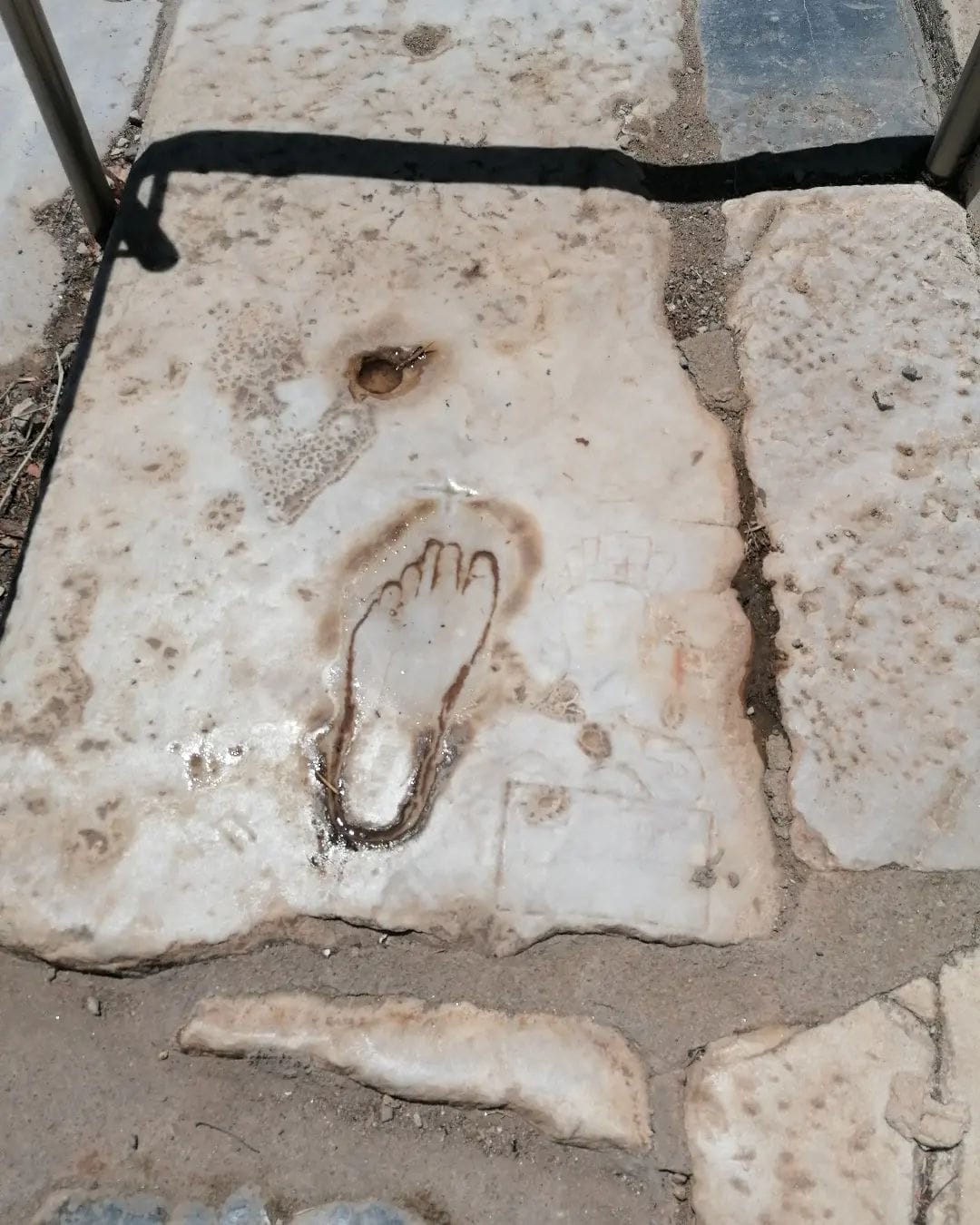Ephesus: Uncovering Advertising’s Ancient Origins

In the ancient city of Ephesus, nestled amidst the sun-baked lands of Anatolia, lies a marvel that transcends time—a stone footprint etched upon the marble roads. This seemingly humble artifact is not merely a relic of the past but a pioneering innovation, marking the dawn of advertising and guiding visitors to the General House, a precursor to the modern business advertisement.
The footprint on the marble road of Ephesus is a testament to the ingenuity of its creators, who ingeniously utilized symbolism and iconography to convey vital information to travelers. Positioned strategically, the left footprint served as a directional guide, indicating that the General House lay ahead to the left. This simple yet effective communication method ensured that even unfamiliar visitors could navigate the bustling streets of Ephesus with ease.
Adjacent to the footprint stands a depiction of a woman adorned with a queen’s crown—an elegant symbol intended to convey not just the allure of the establishment but also the exceptional quality of service offered within. The image of the crowned woman suggests that the attendants of the General House were as revered and respected as queens, their hospitality and grace rivaling that of royalty.

Further enhancing the message of hospitality and warmth is the heart symbol positioned next to the footprint—a universal symbol of love and affection. In ancient Ephesus, this symbol served to communicate not only the excellence of the General House’s services but also the genuine care and consideration extended to all who crossed its threshold.
The convergence of these elements—the footprint, the crowned woman, and the heart symbol—transforms the General House into a pioneering example of early advertising. It embodies the principles of effective communication and brand promotion that remain relevant in contemporary marketing strategies.
The footprint on the marble road of Ephesus not only guided travelers but also established a precedent for future advertising practices. Its innovative use of visual cues and symbols to convey information laid the foundation for the development of signage and billboards—an enduring legacy that continues to shape the way businesses communicate with their audience.

As visitors traced the footsteps leading to the General House, they embarked on a journey not just through the bustling streets of Ephesus but through the annals of advertising history. They witnessed firsthand the birth of a concept that would evolve and flourish across civilizations, transcending language barriers and cultural divides.
In conclusion, the stone footprint on the marble road of Ephesus stands as a testament to the ancient city’s ingenuity and innovation. It represents more than just a directional marker; it symbolizes the birth of advertising, the art of communication, and the enduring quest to attract and inform customers. Ephesus’ General House emerges not only as a pioneer in business promotion but also as a timeless example of how creativity and symbolism can leave an indelible mark on history.











